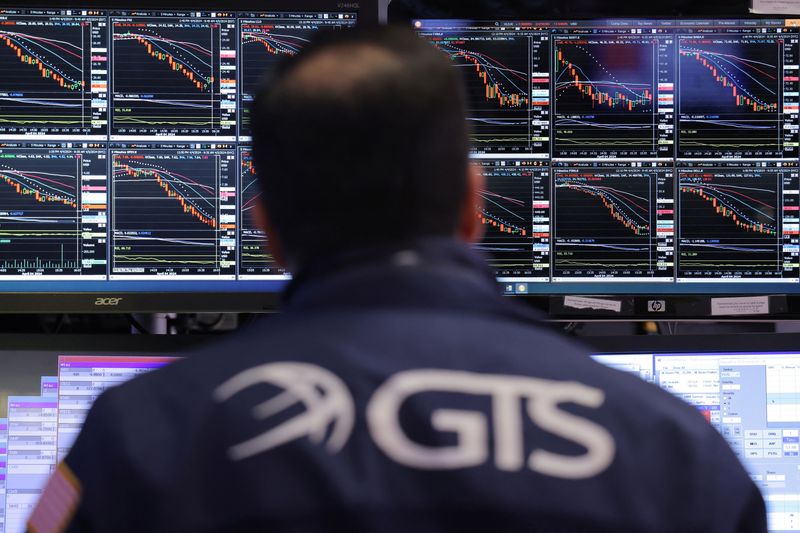By Paritosh Bansal
(Reuters) -Something odd just happened in U.S. short-term funding markets: a benchmark interest rate suddenly fell precipitously on March 19 before bouncing back up the next day.
The drop, which has garnered little attention outside Wall Street trading desks, happened in a corner of the repurchase agreement market, or repo, where firms borrow funds from investors against Treasuries.
That day a key repo interest rate, called the Treasury GCF Repo Index, fell to 5.142%, a significant drop from its previous day's print of 5.334%. The volume of transactions went up $57.64 billion from $31 billion the previous day.
Behind the drop was a large, single trade late in the day involving a big player, according to three market sources and a review of publicly available transaction data. The trade was in the mid-$20 billion range at a 5% rate and happened sometime after 1 pm, according to two of the sources.
The trade was odd as the bulk of repo market activity happens in the morning. A big investor was likely stuck with a huge amount of cash and needed to get it off its books, the sources said. They attributed it to bad collateral management.
Reuters could not determine further details of what happened, including the identity of the parties involved in the trade.
The aberrant trade poses a mystery that's worth solving for the sake of transparency in one of the world's most important markets. While the incident may be contained, with the market working as intended, information about what went on could provide important insights into market function.
Short-term funding markets are crucial to Treasuries and global finance, and disruptions there can have broad ramifications, including for financial stability. They, however, tend to be secretive, with even regulators sometimes struggling to understand what goes on there.
Darrell Duffie, a Stanford University finance professor, said regulators are probably curious about what happened. "A transaction this large, and at these terms should raise some antennae," he said.
Duffie, however, noted that there was no obvious sign that it represented "an undue risk to the financial system or bad behavior."
The Depository Trust & Clearing Corp and the New York Fed, which publish general collateral repo rates, declined to comment. The Securities and Exchange Commission declined to comment.
The trade happened around the time the New York Fed conducts its reverse repo operations, where money market funds, government sponsored enterprises and banks can put up cash with the Fed, the sources said. The Fed has been paying 5.3% for overnight funds, much higher than the rate the investor got in the large trade on March 19.
If the trade involved a government sponsored enterprise or money market fund, it could provide information about the institution's risk controls.
Understanding what went on could also shed light on market structure and concentration risks. The fact the trade didn't happen at a much lower rate suggested that the investor behind the trade was important enough for banks to help them, two of the sources said.
To be sure, the trade may not have any broader implications. One of the market sources said such incidents happen from time to time. The Treasury GCF repo index, for example, saw a similar one-day drop on July 8, 2022, when it fell to 1.176% from 1.55% the previous day before bouncing back.
The impact of the March 19 trade on the overall market was limited. Other benchmark rates based off transactions in the market, such as the Secured Overnight Financing Rate and the Broad General Collateral Rate, were not affected by the trade.

Even so, it was large enough to show up in transaction data. In calculating the Broad General Collateral Rate, for example, the New York Fed publishes the interest rates at which transactions are done by percentiles.
On March 19, the first percentile showed a rate of 5%, down from 5.25% the previous day. By March 20, it had bounced back up again.